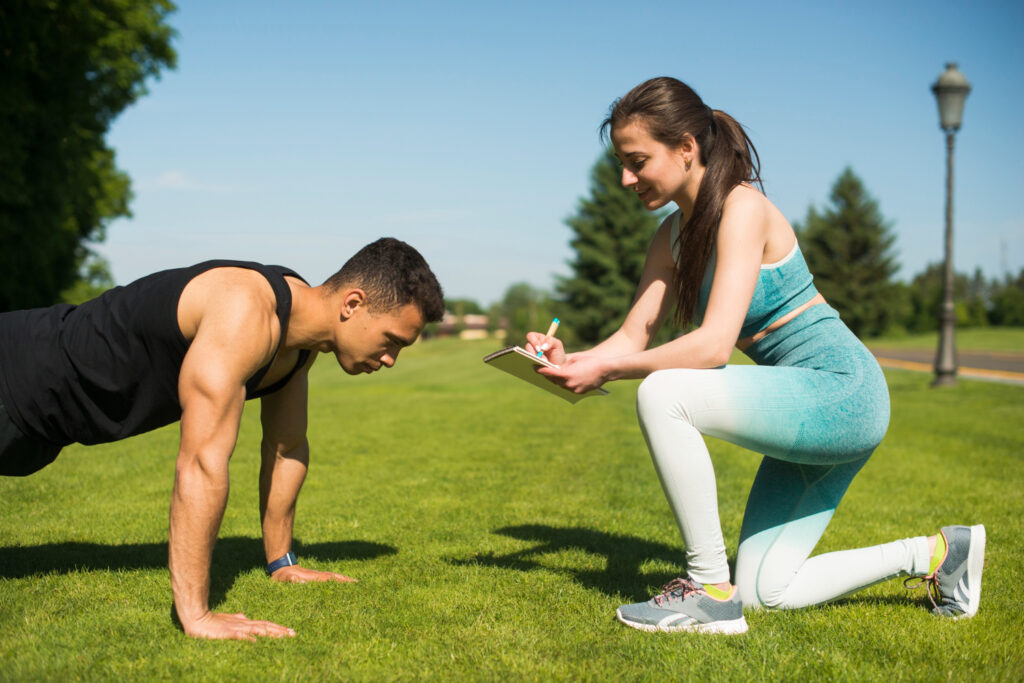Many fitness enthusiasts often overlook stretching, but it plays a vital role in maintaining flexibility, preventing injuries, and improving overall performance. Understanding The Importance of Stretching Before and After Exercise can transform your workout routine and long-term physical health, whether you’re a beginner or an advanced athlete.
In this article, we’ll explore the benefits of stretching, the science behind it, and practical tips to incorporate it into your fitness regimen. If you’ve ever wondered why experts emphasize stretching, keep reading to uncover its significance.
Table of Contents
What is Stretching and Why is it Crucial?
Stretching is the process of elongating muscles and connective tissues to improve flexibility and range of motion. This simple yet powerful activity is not just for yoga practitioners; it’s essential for anyone who engages in physical activities.
When you perform exercises, your muscles contract and tighten. Stretching helps to loosen these muscles, ensuring they’re prepared for movement and recovery. Dismissing this viewpoint can prompt firmness, diminished execution, and even wounds.
The Science Behind Stretching
To understand The Importance of Stretching Before and After Exercise, let’s delve into the science:
1. Pre-Exercise Stretching
Before you dive into your workout, dynamic stretching prepares your body for the activity ahead. It increases blood flow, warms up the muscles, and activates the nervous system, ensuring optimal performance.
- For example: Leg swings, arm circles, or walking lunges are great ways to prepare for high-intensity activities.
Dynamic stretching improves flexibility and enhances joint range, reducing the risk of sudden muscle strains or pulls during exercise.
2. Post-Exercise Stretching
After exercising, static stretching helps in cooling down. By holding stretches for 15-30 seconds, you can:
- Release tension in tight muscles.
- Promote circulation to speed up recovery.
- Prevent delayed onset muscle soreness (DOMS).
For instance, after a long run, stretching the hamstrings and calves can alleviate stiffness and promote faster recovery.
Benefits of Stretching Before Exercise
1. Improves Flexibility
Flexibility is key to performing exercises with the correct form. Stretching elongates the muscles, allowing them to move freely. This enhances your ability to perform exercises effectively.
2. Prepares Your Body for Movement
Stretching boosts circulation and increases the oxygen supply to muscles. This ensures your body is primed for action, improving your workout efficiency.
3. Prevents Injuries
Cold muscles are prone to tears and strains. Dynamic stretching gradually warms them up, minimizing injury risks.
4. Boosts Mental Focus
Stretching before exercise can help you mentally transition into workout mode. It’s a moment to connect with your body and set your intentions for the session.
Benefits of Stretching After Exercise
1. Enhances Muscle Recovery
Post-exercise stretching helps to flush out lactic acid, reducing muscle fatigue and soreness.
2. Improves Posture
Many workout routines, like weightlifting or running, can tighten certain muscle groups. Stretching restores balance, promoting better posture over time.
3. Relieves Stress
Stretching triggers the release of endorphins, reducing stress and promoting relaxation. It’s the perfect way to unwind after an intense session.
4. Prevents Stiffness
By elongating contracted muscles, post-exercise stretching prevents stiffness, ensuring you feel refreshed rather than sore the next day.
Dynamic vs. Static Stretching: What’s the Difference?
To fully appreciate The Importance of Stretching Before and After Exercise, it’s crucial to understand the two main types of stretching:
Dynamic Stretching
- Includes dynamic developments that copy the movement you’re going to perform.
- Best for pre-exercise as it warms up the muscles.
- Examples: High knees, arm swings, or jumping jacks.
Static Stretching
- Includes standing firm on a stretch in a proper foothold for a set term.
- Ideal for post-exercise to relax muscles and improve flexibility.
- Examples: Seated forward fold, quad stretch, or child’s pose.
Practical Tips for Effective Stretching
1. Warm Up Before Stretching
Stretching cold muscles can lead to injuries. Always start with light cardio, like jogging or jumping jacks, to increase blood flow.
2. Focus on Major Muscle Groups
Target areas like hamstrings, quadriceps, calves, shoulders, and back. These muscles are most engaged during workouts.
3. Breathe Deeply
Breathing deeply during stretching helps you relax and enhances the stretch. Try not to pause your breathing as it can prompt pressure.
4. Avoid Overstretching
Stretch to the place of gentle pressure, not torment. Overstretching can cause muscle strains and tears.
5. Be Consistent
To reap the full benefits of stretching, make it a consistent part of your routine. Aim for at least 10-15 minutes before and after every workout.
Common Myths About Stretching
Despite its importance, there are several misconceptions about stretching:
1. Stretching Isn’t Necessary for Strength Training
Fact: Stretching improves joint mobility, allowing for better lifts and reduced risk of injury during strength training.
2. Stretching Alone Prevents Injuries
Fact: While stretching reduces injury risks, it’s not a substitute for proper form, adequate hydration, and rest.
3. Stretching Should Be Painful
Fact: Stretching should be comfortable. Pain indicates overstretching, which can harm your muscles.
Stretching for Different Types of Workouts
1. For Cardio Workouts
Before: Perform dynamic stretches like leg swings and butt kicks to warm up.
After: Focus on static stretches for the calves, quads, and hamstrings to relieve tension.
2. For Strength Training
Before: Dynamic stretches, such as arm swings or torso twists, improve mobility.
After: Static stretches like a chest opener or seated spinal twist restore flexibility.
3. For Yoga and Pilates
Before: Gentle dynamic stretches prepare the body for poses.
After: Deep static stretches enhance relaxation and flexibility.
Real-Life Benefits of Stretching
Case Study: An Amateur Runner
Jane, a beginner runner, often skipped stretching in her routine. Within weeks, she experienced tight hamstrings and knee pain. After incorporating dynamic stretches before and static stretches after her runs, her performance improved, and the discomfort vanished.
This highlights The Importance of Stretching Before and After Exercise, especially for repetitive activities like running.
Stretching Tools and Accessories
To maximize your stretching routine, consider using tools like:
- Foam rollers: For deep muscle release.
- Resistance bands: To enhance stretch depth.
- Yoga straps: For improving flexibility in hard-to-reach areas.
Final Thoughts: Make Stretching a Priority
Understanding The Importance of Stretching Before and After Exercise is the first step toward a healthier, injury-free workout routine. It’s a small-time investment with massive returns in flexibility, recovery, and overall performance.
Next time you hit the gym or track, stretch for a few minutes. Your body will thank you with improved movement, reduced soreness, and enhanced results.
Stay consistent, listen to your body, and embrace stretching as a non-negotiable part of your fitness journey.
FAQs About The Importance of Stretching Before and After Exercise
1. Why is stretching important before exercise?
ANS: Stretching before exercise helps to prepare your muscles for physical activity. It further develops the bloodstream, increments adaptability, and diminishes the gamble of wounds. Dynamic stretching, in particular, warms up the body and enhances performance during workouts.
2. What are the benefits of stretching after exercise?
ANS: Stretching after exercise helps muscles cool down, reduces soreness, and promotes recovery by improving blood circulation. It also restores flexibility and alleviates tension in tight muscles, which can prevent stiffness.
3. How long should I stretch before and after a workout?
ANS: Before exercise: Spend 5-10 minutes on dynamic stretches.
After exercise: Dedicate 10-15 minutes to static stretches for optimal recovery and relaxation.
4. What is the distinction between dynamic and static stretching?
ANS: Dynamic stretching: Active movements that mimic workout actions, ideal before exercise to warm up.
Static stretching: Holding a stretch in one position for a duration, best for post-exercise to relax muscles.
5. Can stretching prevent injuries?
ANS: While stretching doesn’t guarantee injury prevention, it significantly reduces the risk by improving flexibility, joint mobility, and muscle preparedness. Combined with proper form and warm-ups, it’s an effective preventive measure.
6. Is it bad to stretch without warming up?
ANS: Yes, stretching cold muscles can lead to strains or injuries. Always perform light aerobic activities, like jogging or jumping jacks, to warm up before stretching.
7. Would it be a good idea to extend consistently, even on rest days?
ANS: Yes! Stretching daily, even on rest days, maintains flexibility, improves posture, and promotes relaxation. Gentle yoga or simple static stretches are ideal for non-workout days.
8. Can I overstretch?
ANS: Yes, overstretching can lead to muscle strains or tears. Always stretch to a point of mild tension, not pain, and avoid bouncing during stretches.
9. Are there any tools that help with stretching?
ANS: Yes! Tools like foam rollers, resistance bands, and yoga straps can enhance the depth and effectiveness of your stretches.
10. Is stretching necessary for all types of workouts?
ANS: Absolutely. Whether it’s cardio, strength training, or yoga, stretching is vital before and after every workout to ensure muscle preparedness, recovery, and flexibility.
11. What happens if I skip stretching?
ANS: Skipping stretching can lead to stiff muscles, reduced flexibility, increased injury risk, and delayed recovery after workouts. Over time, it may also negatively impact posture and movement efficiency.
12. Can stretching improve athletic performance?
ANS: Yes! Stretching improves the range of motion, enabling better form and efficiency during activities. It also enhances muscle elasticity, which can boost overall performance.
13. How do I know if I’m stretching correctly?
ANS: You should feel a gentle pull in the target muscle without pain. Maintain good posture and avoid holding your breath. Use a mirror or professional guidance to ensure proper form.
14. Can stretching help with stress relief?
ANS: Yes! Stretching reduces muscle tension, promotes blood flow, and releases endorphins, all of which contribute to relaxation and stress reduction.
15. Should I stretch if I’m sore from a previous workout?
ANS: Gentle stretching can help alleviate soreness by improving circulation to the affected muscles. Avoid aggressive stretches if the soreness is severe.



